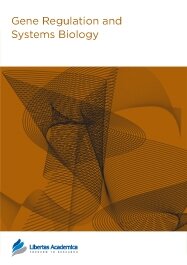

Publication Date: 29 May 2008
Journal: Gene Regulation and Systems Biology

1Department of Biosciences, School of Science and Engineering, Teikyo University, 1-1 Toyosatodai, Utsunomiya, Tochigi Prefecture 320-8551, Japan. 2Graduate School of Pharmaceutical Sciences, University of Tokyo, Bunkyo-ku, Tokyo 113-0033, Japan. 3Department of Parasitology and Immunology, National Defense Medical College, 3-2 Namiki, Tokorozawa, Saitama 359-8513, Japan. 4Graduate School of Pharmaceutical Sciences, Chiba University, 1-8-1 Inohana, Chuo-ku, Chiba 263-8522, Japan. 5Medical Research Laboratories, Taisho Pharmaceutical Company Ltd., Yoshino-cho 1-403, Kita-ku, Saitama-shi 330-0031, Japan
Abstract
S-adenosylmethionine decarboxylase (SAMDC) is an enzyme which converts S-adenosylmethione (SAM), a methyl donor, to decarboxylated SAM (dcSAM), an aminopropyl donor for polyamine biosynthesis. In our studies on gene expression control in Xenopus early embryogenesis, we cloned the mRNA for Xenopus SAMDC, and overexpressed the enzyme by microinjecting its mRNA into Xenopus fertilized eggs. In the mRNA-injected embryos, the level of SAMDC was enormously increased, the SAM was exhausted, and protein synthesis was greatly inhibited, but cellular polyamine content did not change appreciably. SAMDC-overexpressed embryos cleaved and developed normally up to the early blastula stage, but at the midblastula stage, or the stage of midblastula transition (MBT), all the embryos were dissociated into cells, and destroyed due to execution of apoptosis. During cleavage SAMDC-overexpressed embryos transcribed caspase-8 gene, and this was followed by activation of caspase-9. When we overexpressed p53 mRNA in fertilized eggs, similar apoptosis took place at MBT, but in this case, transcription of caspase-8 did not occur, however activation of caspase-9 took place. Apoptosis induced by SAMDC-overexpression was completely suppressed by Bcl-2, whereas apoptosis induced by p53 overexpression or treatments with other toxic agents was only partially rescued. When we injected SAMDC mRNA into only one blastomere of 8- to 32-celled embryos, descendant cells of the mRNA-injected blastomere were segregated into the blastocoel and underwent apoptosis within the blastocoel, although such embryos continued to develop and became tadpoles with various extents of anomaly, reflecting the developmental fate of the eliminated cells. Thus, embryonic cells appear to check themselves at MBT and if physiologically severely-damaged cells occur, they are eliminated from the embryo by activation and execution of the maternally-inherited program of apoptosis. We assume that the apoptosis executed at MBT is a "fail-safe" mechanism of early development to save the embryo from accidental damages that take place during cleavage.
PDF (6.27 MB PDF FORMAT)
RIS citation (ENDNOTE, REFERENCE MANAGER, PROCITE, REFWORKS)
BibTex citation (BIBDESK, LATEX)
XML
PMC HTML
Publishing in Air, Soil and Water and Water Research was the best experience I have had so far in an academic context. The review process was fair, quick and efficient. I congratulate the team at Libertas Academica for a very well managed journal.Magnus Karlsson (IVL Swedish Environmental Research Institute, Stockholm, Sweden) What Your Colleagues Say
Copyright © 2012 Libertas Academica Ltd (except open access articles and accompanying metadata and supplementary files.)
FacebookGoogle+Twitter
PinterestTumblrYouTube